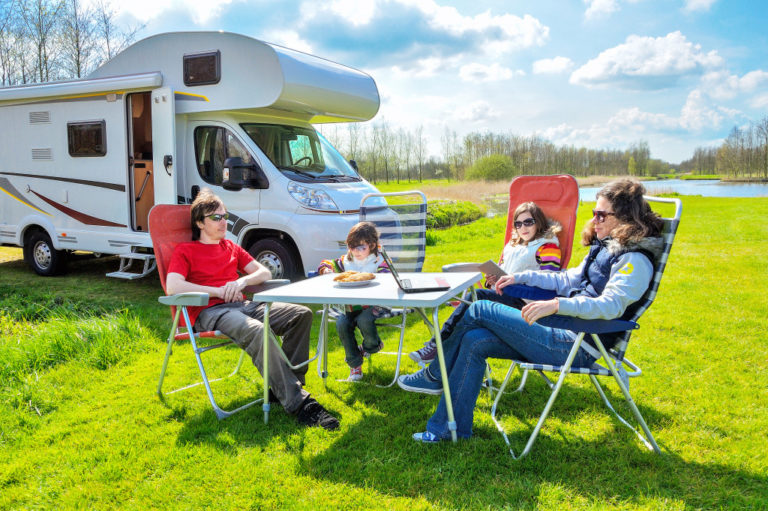An RV is an incredibly durable machine, but in order to maximize its long lifespan, it requires regular maintenance to keep performing at its best. With so many odds and ends to this vehicle, it can be difficult for an RV owner to even know where to start. Although each unit is different, there are still certain maintenance tasks that every motor home or trailer calls for that aren’t negotiable.
Whether the RV is brand new or bought secondhand from RV dealers, this checklist contains everything an RV owner needs to do on a daily, monthly, and yearly basis to keep their vehicle in tip-top shape.
Tasks Before Every Trip
- Check the tires. Preventing tire blowouts is vital to guaranteeing every trip is a safe one while on an RV. Make sure to check the pressure of all the tires and inflate the ones that need it. Furthermore, you should inspect tires for any damage, excessive tread wear, and holes.
- Fold up the jacks. RVs come with a built-in stabilizer jack that can be pulled down from the vehicle’s frame to keep the vehicle secure when parked. They should be retracted up into the frame and locked into place when out on the road.
- Examine headlights and brake lights. Just like any car, headlights, and brake lights should be in good working condition to ensure safety while driving at night.
- Stow away the satellite and antenna. If the vehicle has a satellite dish and antenna, these should be taken down and stowed away safely before taking off.
- Secure the cabinets and compartments. To keep things from moving around and falling over while in transit, cabinets and exterior compartments should be closed and locked, and any loose, fragile items should be stored safely.
- Remove any debris on the roof. Any debris left on the roof can damage the vehicle and become dangerous when in transit. Clear out any debris and stow away any equipment that’s still on the roof before hitting the road.

Monthly Tasks
- Take the RV for a drive. Letting an RV’s engine and axles sit for a long period without use can damage it. It’s important to take it out for a drive every once in a while, even without any intended destination. At least once every month is highly recommended.
- Check for cracks. Cracks on the body of the vehicle as well as the tires are an open invitation for pests to enter. Make sure to closely examine the RV for any cracks, no matter how small, and fill them in as needed.
- Inspect safety gear. Make sure all safety equipment is in good working order by testing them. This includes the carbon monoxide detector, fire extinguisher, and smoke detector. Clean them out and replace batteries if needed. Any faulty safety gear should also be replaced immediately.
- Activate the generator. Gas can become spoiled if it’s left to sit for a long period. It’s necessary to run the RV’s generator at approximately 50% load once every month to keep it fresh.
- Refill the batteries. The water in the RV’s batteries can evaporate and dry up, which can severely damage it when it’s running. Check water levels every month and refill with clean, distilled water as needed.
- Look under the hood. Just like with most vehicles, a regular inspection of the contents under the hood is necessary for an RV. There should be no indications of leakage and everything should be securely fastened.
Yearly Tasks
- Give the RV a deep clean. A thorough cleaning of the exteriors and interiors of an RV is necessary every year. If the RV is used often, then a deep cleaning should happen at least twice a year. Dirt, old food, and dust can lead to more serious issues in the long run.
- Replace fluids. The oil in the engine, as well as the water in the battery and air conditioner of the vehicle, should be changed whenever they’re running low at least once within the year.
- Tune up the brakes, tires, hoses, and belts. These components of the RV get the most wear and tear, so they should be tuned up by a professional at least once a year.
- Lubricate metals. Components like hitches, jacks, and fold-up stairs are made out of metal and can turn rusty over time, especially if they aren’t often used. Make sure to lubricate them annually.
- Seal up the exteriors. Broken seals can lead to water and air leaks, which can be significantly damaging to the vehicle. It’s important to check for any leaks every year and properly seal them up.
Just like any vehicle, RVs can last a long time if they’re properly maintained and cared for. This checklist serves as a guide for any RV owner on what exactly they need to do for their RV on a daily, monthly, and yearly basis to make sure their unit is in excellent condition for longer.




